

THE USD VISTA

On April 22, approximately 800 USD students, staff and community members gathered in anticipation as USD opened its Palomar Health Student Wellness Center in a ribbon cutting ceremony.
USD President James T. Harris III and CEO of Palomar Health Diane Hansen cut the
ribbon together, opening the Wellness Center to a wave of students eager to explore the new building. The Wellness Center has multiple rooms on three floors, all designed to meet a different student wellness need.
The entire building includes 79,000 square feet of indoor space and 69,000 square feet of outdoor space. There are dedicated weight and cardio rooms, a juice bar, an esports lounge and flexible
rooms for physical training classes. It is also the new home to the Counseling Center and the Center for Health and Wellness Promotion. Kimmel Yeager, Executive Director of the Palomar Health Student Wellness Center, explained what the Wellness Center adds to the USD campus.
“It blends physical fitness, mental restoration, social connection, art therapy, olfactory
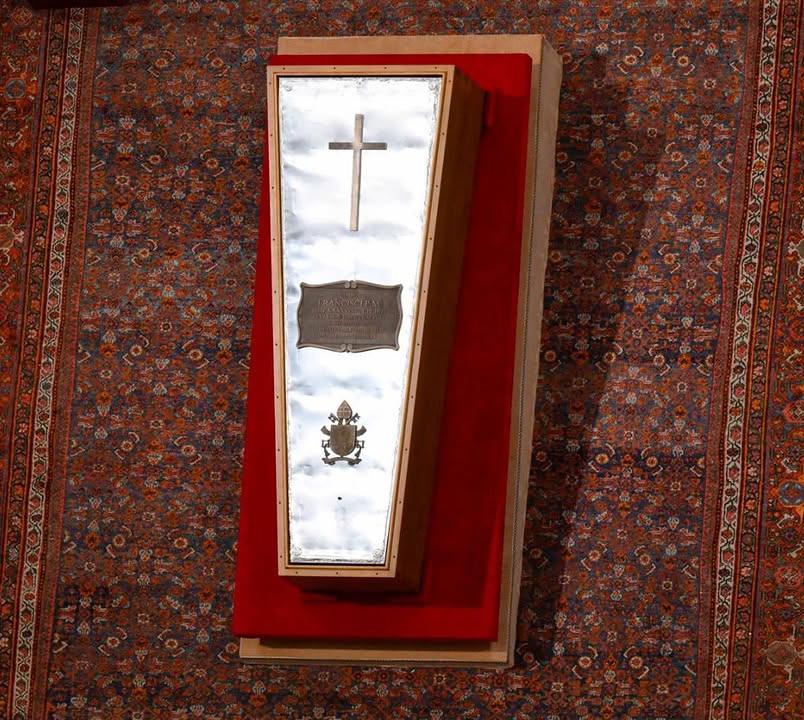
On Easter Monday, Pope Francis died from a stroke and heart failure in the Vatican. The Pope was seen just the day before on Easter Sunday greeting patrons in Vatican City, which marked his first major appearance since his hospitalization.
As the first Jesuit pope and the first pope from the Americas, Pope Francis was revolutionary in his efforts to combat climate change, encourage world peace and foster inclusive environments throughout the Catholic church.
USD sophomore Ray Servin felt the loss of the Pope in his
own personal community.
“I was raised Catholic, but I’m not even that religious anymore and I still loved him,” Servin said. “I’m also Mexican, and he was really influential for the Latino community. The whole country is kind of in a period of mourning. End of an era. He was a king.”
USD released a statement on Pope Francis’ death hours after the news broke.
“Pope Francis never wavered in his pursuit of peace and justice and was courageous in confronting humanity’s greatest challenges,” the University stated in an email. “He embodied what we hope every graduate of
The non-tenure track (NTT) faculty union’s strike authorization vote passed with 90% of voters in support of striking. The vote was prompted after the University significantly reduced course offerings taught by NTT professors. A press release from the union explained that 25% of NTT faculty members who taught a course in the Fall 2024 semester are not listed for classes in Fall 2025. The union claims that the cut is retaliatory — as it occurred without bargaining
— and that it is illegal. This led the union to file an Unfair Labor Practices (ULP) charge with the National Labor Relations Board.
Currently, the union’s leadership has yet to set a date for a strike. The strike authorization vote provided a consensus for the possibility of a strike, but doesn’t necessarily mandate one. If a strike occurred, professors would not perform any work for USD — including but not limited to teaching, grading, writing letters of recommendation and advising student organizations. Typically during strikes, universities are responsible for providing
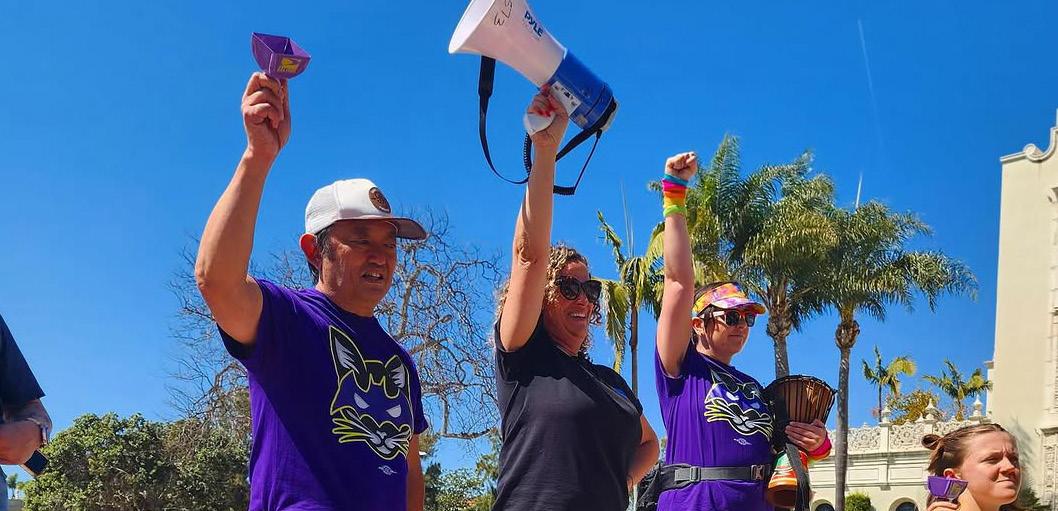


The Palomar Health Student Wellness Center officially opened its doors to the USD community on April 22. Jason Wu/The USD Vista
CADEN
ASST. NEWS EDITOR
MAE O’MALLEY ASST. NEWS EDITOR
The pope’s casket has been sealed and buried at St. Peter’s Basilica. Photo courtesy of @vaticannews/Instagram
Wellness Center debuts after wait Long-awaited facility features fitness areas, outdoor courts
From Wellness, Page 1
wellness and health education into a single destination,” Yeager stated. “With spaces for meditation, sleep health, movement classes and community engagement, the wellness center adds to the wellness services that were already being offered, and provides students with additional tools to promote healthy habits for years to come.”
Students were also heavily involved in the entire process of creating the Wellness Center. Yeager explained the extent of student involvement in the making, marketing and maintaining of the Wellness Center.
“From initial focus groups to feedback surveys, student input directly influenced space planning, equipment selection and program offerings,” Yeager explained. “Student employees and leaders were also essential in the lead-up to the opening — supporting everything from branding and messaging to hands-on logistics and hospitality training. This center is truly by students, for students. Our student employees participated in over 25 hours of training specific to the opening of the Wellness Center to help students navigate the new space and provide top-notch hospitality.”
The third floor has fitness rooms, split into a room for cardio and a room for strength training. Sofia Kartel, a USD firstyear who frequented the treadmill at the Bradford Lee Bosley Fitness Center, shared her experience with the new cardio room.
“Something that I really appreciate about the cardio room is that they have the huge glass windows,” Kartel said. “At Bosley, I would always go there and wait a while, like 10 minutes, for the treadmill that was in front of the window so that I wouldn’t have to look at the ground or at the TVs. Sometimes exercise can be stressful, so I appreciate being able to look at happy things while I am running.”
Gavin Kerr, a USD firstyear who uses the strength machines six times a week, explained his experience with the new gym compared to the previous gyms on campus.
“There is a lot more variety in the new fitness center because they have more room for other forms of fitness recreation such as the outdoor spaces with the soccer field and the volleyball court which they did not have in the other two gyms,” Kerr explained. “It’s definitely a less monotonous experience for me because it means I can have more variety in my week when I am planning a workout instead of strictly sticking to weights.”
These rooms are meant to form a complete gym space and replace the previous gyms on campus, the Bosley Fitness Center and the Jenny Craig Pavilion
(JCP), which will transition to new spaces. The Bosley Fitness Center will reopen as the new home for Outdoor Adventures in the Fall of 2025, and the JCP space will become a multiuse space for USD Athletics.
Some frequenters of the previous gyms on campus were disappointed at certain aspects of the new gym. Maddy Li, a USD first-year student, goes to the gym daily and expressed her disappointment in the new workout area.
“I was honestly disappointed because I was expecting a really big workout area, and the gym in the Wellness Center is so small,” Li stated. “Even though they just opened the gym, there are only half the attachments for the cable machines compared to what there was in the other gyms. There are literally only two cables in the entire gym. There’s also only one leg press, one hip thrust machine, and the machines don’t max out at the same weight they did before.”
The third floor of the building has a rejuvenation lounge with individual napping pods for students to rest in as well as a group fitness room. An esports lounge is located on that floor as well, with multiple complete personal computer setups that any student can log into and play games on. The lounge will be open to all students during hours of service. There is also a fully equipped teaching kitchen that will hold cooking classes in the future. The food option in the Center is a juice bar, named Crush Juice Co., and is located next to the kitchen. Some students appreciate the new addition to campus and the new option to consider when getting food. Kartel gave her opinion on the new juice bar.
“Even though the prices are a bit expensive, like five dollars for an orange juice is asking a bit much, I still think Crush is awesome,” Kartel stated. “I like the juice that is available, and I don’t stand for Crush hate I’ve heard around campus.”
Some students are not as satisfied with the implementation of this food option.
Aurora MacDonald, a first-year student-athlete at USD, expressed her dislike of the juice bar.
“The lines at the juice bar are way too long, and the juice has too much ice and not enough fruit, so it’s way too watery,” MacDonald explained.
The second floor holds rooms for fitness, a lounge, a locker room and offices. The counseling department is set to move into those offices out of their old ones in the University Center.
The first floor is almost completely outside. The first part, accessible from the inside, is the Multipurpose Athletic Indoor Court. This court is accessible for basketball, volleyball and other indoor-court sports. The outer
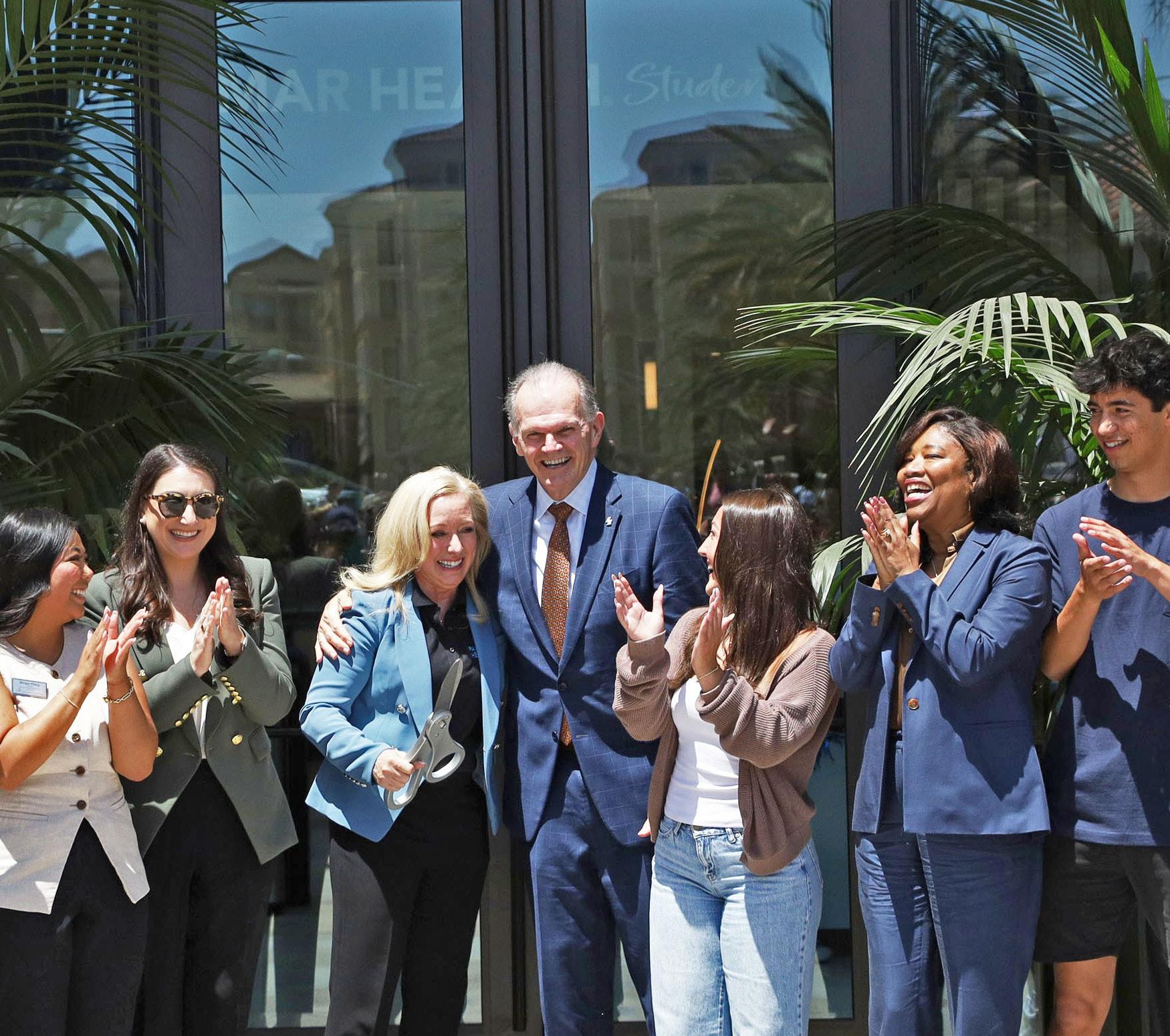

portion of the Wellness Center has a beach volleyball court and a small-sized turf soccer field. Here, crowds of students can congregate to play various sports and socialize at the tables around the action.
Next to the soccer field is an outdoor gym area with equipment for lifting, monkey bars and a bouldering wall. Jaziel Mayoral, a senior at USD, gave his opinion after using the outdoor gym equipment.
“I think it was a good idea that they added the outside
gym,” Mayoral stated. “They could change some things to optimize what you can do outside, like the way they set up the bars so that you can swing from one to the other. Right now, it’s very limited because they’re either too small or too big, there’s no in between and there’s no lower bars for people to practice on.”
Andre Suide, a sophomore at USD who plays soccer on the outdoor field and uses the outdoor gym, expressed his appreciation for the
outdoor workout facilities.
“The outside gym is based,” Suide explained. “I am never working out inside again. I love the fact that there is an outdoor area for exercising, so that I can play soccer and breathe the fresh air.”
As the Wellness Center continues to be open and as students populate it for the rest of the school year, the USD community will continue to access and assess this new addition to campus.
USD’s President Harris and Palomar Health CEO Diane Hansen cut the ribbon together to open the facility.
Photo courtesy of @usandiego/Flickr
Outside of the Wellness Center, students can work out in an outdoor gym.
Photo courtesy of @usandiego/Flickr
NEWS
Toreros grieve death of Pope Francis
Head of the Catholic Church passes after health struggles
From Pope Francis, Page
USD will view as their mission in life; to foster peace, work for justice and lead with love.”
On Wednesday evening, Founders Chapel hosted a memorial mass in honor of his Holiness. Father Gregory McGivern, USD’s University Chaplain, led mourners through a prayer service that commemorated the pontiff’s life.
“He showed us by word and action that solidarity with the poor and vulnerable is not just words, but looking into their faces, touching their flesh, sensing their closeness and trying to help them,” Father McGivern declared.
Many USD students attended the service to pay their respects to the leader of the Catholic Church. One of these students was USD sophomore Silvia Valencia, who attended the mass to hear others’ thoughts on the pope.
“The homily was very touching,” Valencia said. “[Father McGivern] reminded us of the legacy and main purpose of Pope Francis’s papacy. He reminded us that hope, empathy, compassion, kindness and being welcoming was what the Pope continually asked of us.”
As a worldwide figurehead,
EMMA PIRHALA NEWS EDITOR
On April 22, President James T. Harris III signed a statement from the American Association of Colleges and Universities, joining hundreds of other university presidents across the nation. The letter called for ‘constructive engagement’ within campuses and collaboration at a national scale. The letter comes as higher education has been under increased scrutiny by the Trump administration, with schools such as Columbia University and Harvard University losing federal funding and student visas being revoked across the country.
“As leaders of America’s colleges, universities, and scholarly societies, we speak
those who are not Catholic or religious have still felt the loss of the pope. USD senior Angelina Gatpandan shared her emotions regarding the pontiff’s death.
“I wasn’t raised religious, but I definitely feel the loss in the sense that he was really progressive and did a lot for the Catholic community,” Gatpandan said.
Cardinals from around the world have begun their journeys to Rome to commence voting for the next pope — a process referred to as a papal conclave.
Among those being considered is Cardinal Peter Erdo of Budapest, who opposes divorced and remarried Catholics being allowed to receive Communion.
Cardinal Luis Antonio Gokim Tagle of Manila is another potential candidate.
Cardinal Tagle was a close acquaintance of the deceased pope and criticized the church’s harsh view on members of the LGBTQ+ community and unwed mothers.
Bishop Francois-Xavier Bustillo of Ajaccio, France is another front-runner and one of the youngest members of the college of cardinals at 56 years old.
Cardinal Fridolin Ambongo Beunsugu of Kinshasa,
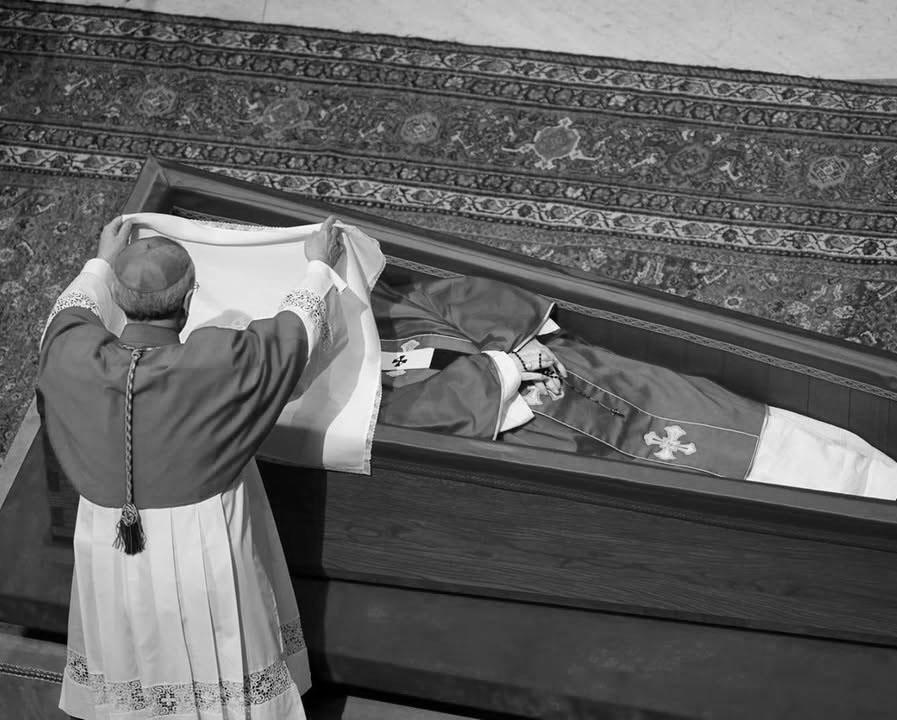
Democratic Republic of Congo would be the first Black pope and is among those who oppose Francis’s blessing of same-sex couples.
Another potential pope, the Archbishop Charles Maung Bo of Yangon, Myanmar has frequently spoken out against the violence that Catholic regions in his country face.
Archbishop Pierbattista Pizzaballa of Jerusalem is another top consideration and is the archbishop for Israel, the Palestinian territories, Jordan and Cyprus. The college of Cardinals will vote on Pope Francis’ successor 15 to 20 days from the day that he died. Until then, many await to see who will be chosen as the next pontiff and continue to mourn the deceased pope.
with one voice against the unprecedented government overreach and political interference now endangering American higher education,” the letter reads. “We are open to constructive reform and do not oppose legitimate government oversight. However, we must oppose undue government intrusion in the lives of those who learn, live, and work on our campuses. We will always seek effective and fair financial practices, but we must reject the coercive use of public research funding.”
In an email to the USD community, Harris explained his reasoning behind signing the statement.
“It is my hope, through collective action and an appeal
to a measured approach, that universities and our nation can navigate these unchartered waters and emerge stronger for it,” Harris stated.
He also recognized the possibility of greater scrutiny on the University due to the letter. However, President Harris maintained the importance of abiding by USD’s goals.
“I am confident that we continue to make decisions and express our position in line with our mission, vision and core values,” he described in the email.
As of publication, the Trump administration has yet to respond to the letter and no major changes have occurred. The USD Vista will continue to monitor any developments in this ongoing story.
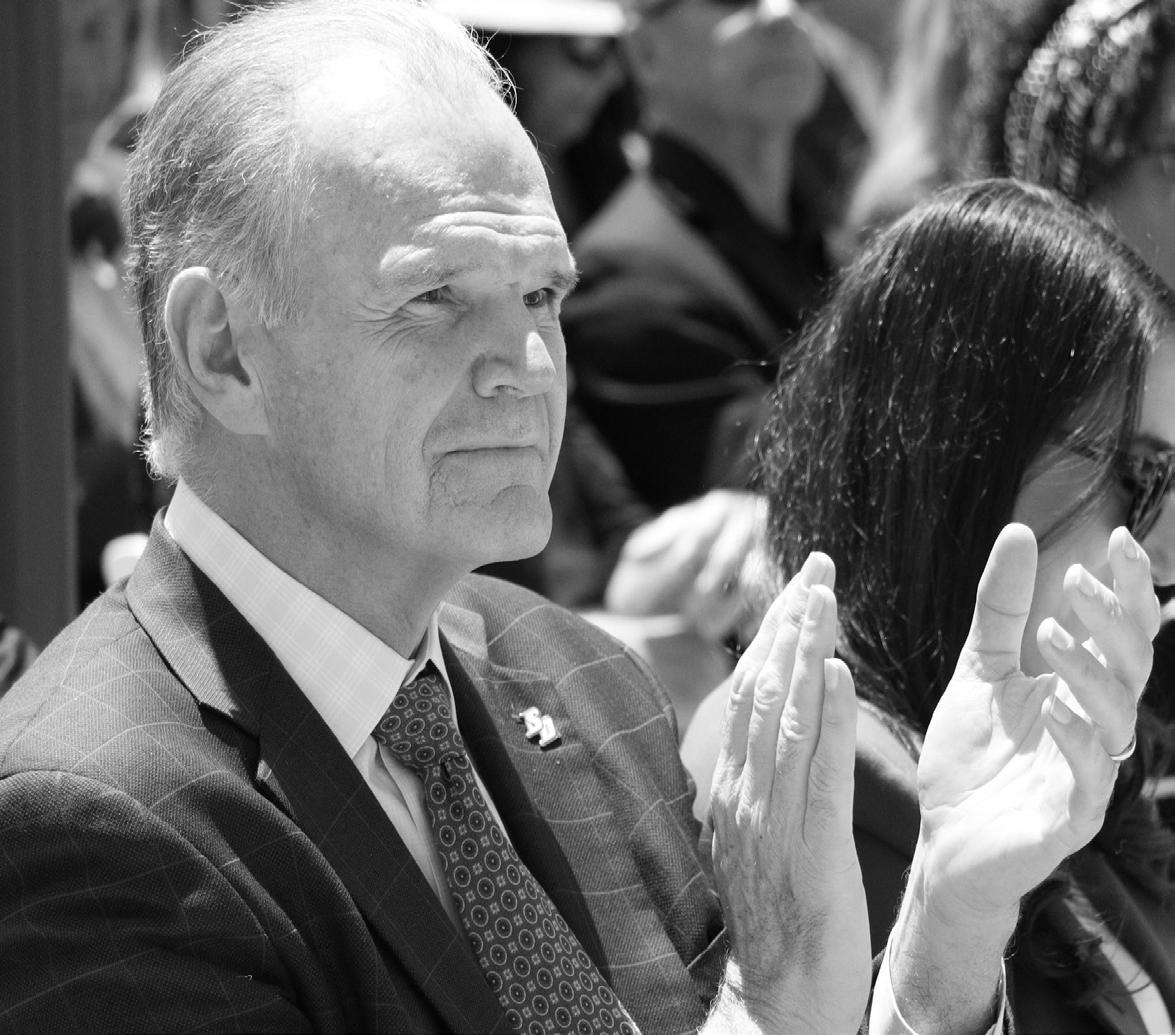
- Advertising Manager
Gina Lew - Student Media Advisor
Marie Minnick - Operations Advisor
The pope has been laid to rest and the papal conclave will begin on May 7. Photo courtesy of @vaticannews/Instagram
President Harris signed the letter along with other university presidents. Photo courtesy of @usandiego/Flickr
Toreros unite for prayer and protest
Vigil spotlights visa revocations, detainments and deportations
JACKIE MARQUEZ EDITOR-IN-CHIEF
On the cold, cloudy Tuesday before Easter Break, around 100 USD community members gathered in a pre-Easter vigil for people who have been detained and deported by the U.S. government. Organized by the Palestinian Solidarity Committee at USD, the event included interfaith prayers, student remarks, chants and reflections on USD’s mission as a Catholic university. Students, professors and administrators alike stood solemnly in Colachis Plaza, holding signs that read “Resist,” “No ICE” and “Protesting Genocide Is A Duty To Human Dignity.” As they did so, touring high schoolers and passing students craned their necks to see what was happening. Some paused to observe and others continued on their way. No counter-protests broke out, but two Department of Public Safety vehicles kept a close eye on the demonstration.
With some international students facing visa revocations and other disciplinary actions for pro-Palestine speech and demonstrations nationwide, a quiet tension hung in the air. Locally, 35 students at the University of California, San Diego and four students at San Diego State University have had their student visas revoked. According to a USD spokesperson, one student at USD has been impacted by recent visa revocations.
The vigil also addressed the growing pressure that the U.S. government has mounted against higher education. In the past few months, the Trump administration has pushed for increased oversight of American universities like Columbia University and Harvard University in response to alleged antisemitism and discrimination.
With these recent events in mind, the vigil opened with multiple prayers from
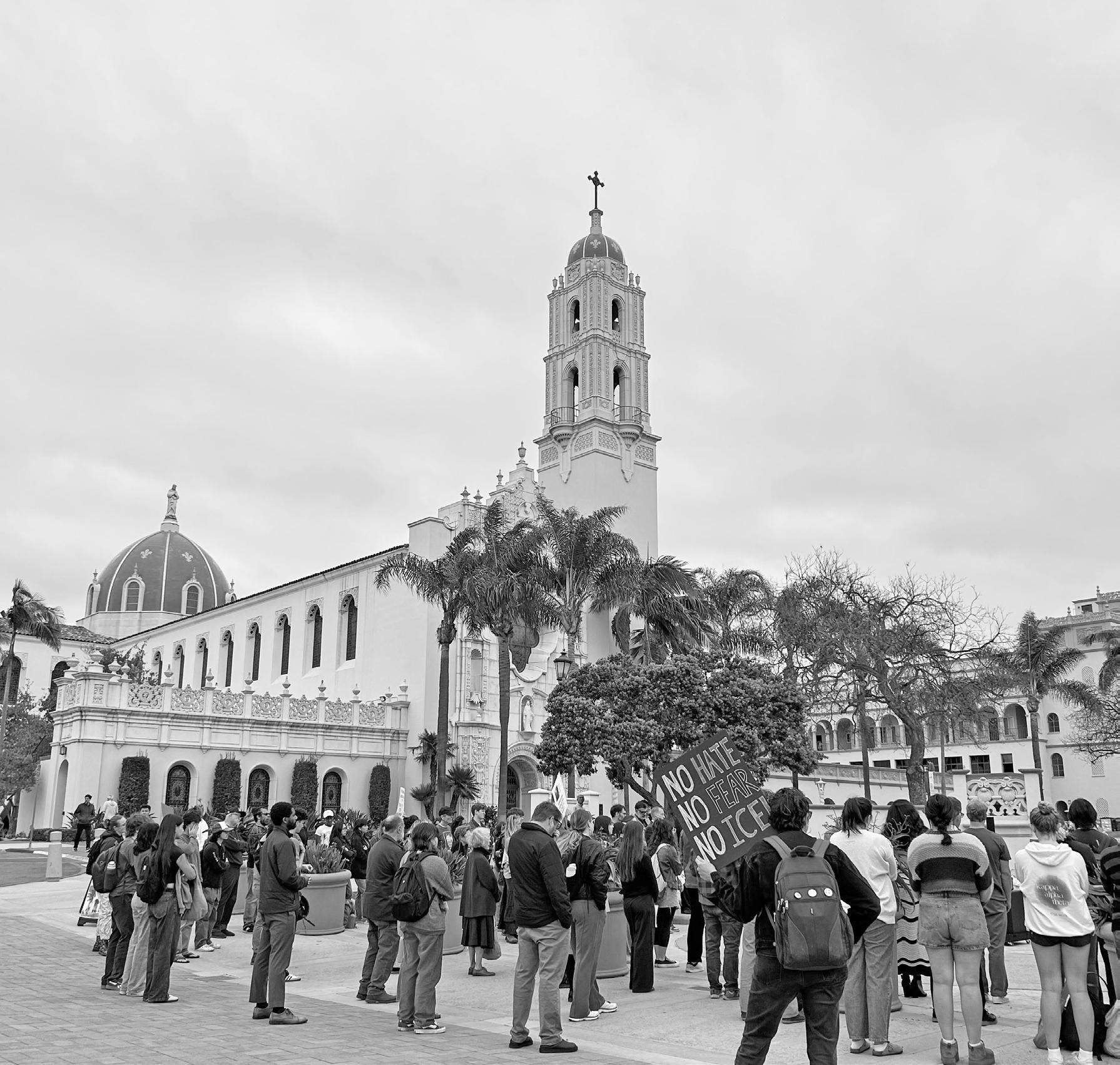
different faith traditions.
Grounding the demonstration on the unceded territory of the Kumeyaay nation, member of the Kumeyaay Nation and USD professor Stanley Rodriguez started the demonstration with a blessing from Kumeyaay.
“Bless each and every one of these warriors here who have come,” Rodriguez translated into English. “Bring their minds and their hearts and their bodies to stand up against injustice, to not be pushed back.”
Following this blessing, USD’s Vice President of Mission Integration Michael Lovette-Colyer stepped up to the microphone. Giving a prayer from the Catholic tradition, he acknowledged the vigil’s overlap with the holiday of Passover. This holiday celebrates the biblical Israelites’ escape from slavery.
USD and
“God of freedom, we assemble today during Passover, reminded that you are a God who liberates the enslaved, frees the oppressed and seeks justice and peace for all your people,” Lovette-Colyer prayed. “God of compassion, we lift up all those who are in need, especially those detained or deported without the due process they deserve.”
Next, a USD undergraduate student, whose name was not given during the vigil out of fear for her safety, gave a Dua’ah from the Islamic faith. Asking for mercy and protection, the student prayed for those who have been deported to those facing violence in Palestine.
“In the name of Allah the most gracious, the most merciful, Ya Allah, the sustainer of all worlds, we turn to you in desperate plea for all people,” the student prayed. “Those
in Palestine, those who have been deported, protect them from the bombardment they face. Shield them from siege, and save them from the hands that aim to harm them.”
Finally, USD junior Mari Cohen offered a prayer from the Jewish tradition. Calling on the angels of justice, Cohen asked for strength to fight for those who have been marginalized.
“Shalom Aleichem,” Cohen prayed. “Peace to you, angels of justice, angels most high. Show us how to fight for the liberation of those whose very lives are forbidden, forgotten, forsaken.”
After praying for change, student speakers worked to raise awareness for the current issues facing migrant communities. Coming from a variety of different majors and disciplines, Toreros shared statistics about detention,
told the stories of people who are currently detained and initiated moments of silence and remembrance. They also drew connections between the struggles of migrants, Native Americans and Palestinians.
“We must connect the dots between the inhumane treatment of migrants, the surveillance of proPalestine activists and the criminalization of dissent,” a student speaker, who also withheld her name, said. “These actions are not isolated. They stem from a shared ideology, a domination, a dehumanization.”
As students reflected on these broader struggles, some speakers also turned their focus to USD as a changemaking campus. One of these speakers was Esteban del Rio, a professor of Communication at USD and the director of the Frances G. Harpst Center for Catholic Thought and Culture.
“At a Catholic university, we ought to be a university,” del Rio stated. “... A university is able to recognize the contradictions [of unifying multiple viewpoints.] The horrible hate that informs antisemitism moves in the same ideological direction of a disregard for Palestinian life, in the same ideological direction of a disinterest in the plight of migrants, in the same ideological direction of the squelching of dissent with cruelty.”
Changes regarding the detention of international students have already started taking place. On Friday, April 25 the Trump administration moved to restore the legal status of thousands of international students — including 18 UCSD and three SDSU students. However, the administration has also indicated that it is working on a new system for reviewing and terminating international students’ records. As federal policy continues to shift, Toreros will continue to have conversations about detention, deportation and freedom of expression in the university setting.
union continue bargaining Potential
From Strike, Page 1
temporary replacements. USD has not confirmed whether or not they would provide substitutes for professors. In response to the possibility of a strike, the University explained that they remain committed to students and negotiations with the union.
“USD has negotiated throughout the process in good faith and it is our goal to reach a mutually acceptable collective bargaining agreement with our NTT colleagues represented by
strike lingers over the end of the semester
the SEIU,” a media relations representative explained on behalf of the University.
“We also want to ensure our students are able to complete the semester successfully.”
Since NTT professors would be unable to perform any work for the University, students may be negatively affected by union action. A memo sent to faculty obtained by The USD Vista explained that if NTT professors obtain the wage increases then tuition could increase by 9%.
The lingering possibility of a strike leaves some students worried. USD sophomore Madelynn Labrecque shared her opinion on the potential strike.
“I don’t think any of my professors are tenured which would mean I wouldn’t have any classes,” Labrecque said. “So am I still paying all this money for nothing?”
However, other students support the union’s strike if it becomes necessary. USD senior Zoe Kobs explained that she supports a strike if it occurs.
“I think it’s a very important time to advocate to the University that without the professors and them being here, it really affects the students, and they need to be held to a standard,” Kobs explained.
As an art history major, Kobs observed that many courses previously offered in the fall were no longer available in the course catalog — including the classes taught by her favorite professor, who is involved in the union. In response, Kobs wrote a letter to the College’s
administration, seeking an explanation or a reversal to the catalog changes. 21 current and former students co-signed the letter in support of NTT faculty in the department.
The NTT union planned a May Day concert for May 1 to protest the University’s actions . The event will occur during the Board of Trustees meeting in the Kroc Institute of Peace and Justice. As the possibility of a strike lingers over the campus, Toreros continue toward finals season.
Students and community members gathered in front of The Immaculata Church for the vigil. Lauren Ceballos/The USD Vista
ARTS & FEATURE
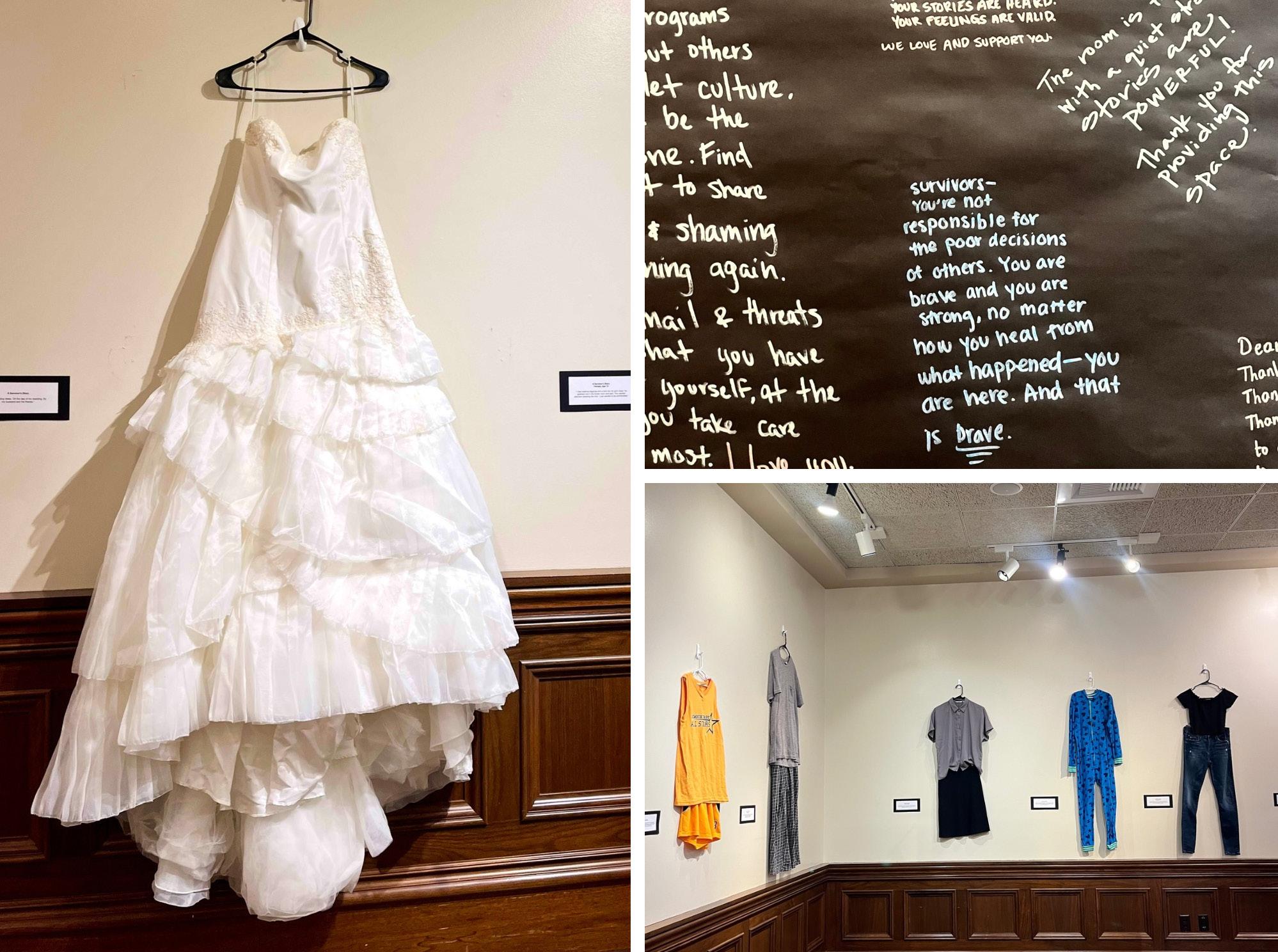
‘What
Were You Wearing?’ SLP exhibit confronts myths about sexual assault
ANJALI DALAL-WHELAN FEATURE EDITOR
Trigger warning: This article discusses topics of sexual violence and assault.
After coming forward with their stories, many survivors of sexual violence have been met with the question, “What Were You Wearing?” To counteract the myth that sexual assault has anything to do with clothing, the “What Were You Wearing?” exhibit in the SLP art gallery features stories from real survivors, accompanied by clothing that represents their story. The clothing hanging in the exhibit ranges from formal dresses to school uniforms, hoodies and swimsuits — demonstrating how sexual assault is never caused by what someone is wearing.
As April, Sexual Assault Awarness Month (SAAM), comes to a close, the “What Were You Wearing?” exhibit highlights the importance of discussing sexual violence. The project, which is on display from April 22 to May 1, was created by USD senior Yesika Menera and USD junior Keira Boley, co-leads for USD’s Relationship and Sexual Violence Prevention (RSVP)
program. Menera and Boley gained inspiration for the exhibit from similar installations that they had seen on the internet.
Manera read a story online from a survivor who was assaulted on her wedding day, which became the catalyst to bring the concept to life.
Manera explained the initial process of creating the exhibit.
“Once I saw [the wedding story], I was like, ‘Okay, Keira, we really need to put this together,’” Manera said. “And so we looked up various different stories. And in reality, truth speaking, it was harder to find men’s stories than women’s stories, and we found a lot of kids’ stories. And that was really heartbreaking, too. So, making this exhibit happen was really hard, too, because, I mean, just for walking around, you can feel the tension, you can feel the pain that people experienced during this.”
After finding a variety of accounts from sexual violence survivors online, Manera and Boley gathered the clothing that they needed to represent the stories. Most of the clothing was donated from their co-workers and peers. They tried to match the clothing to the stories,
including the size and style that the survivor was wearing at the time.
Boley emphasized why it was important to her to include a diversity of ages, genders and experiences in the exhibit.
“Part of the point of ‘What Were You Wearing?’ is [that] it can happen to anyone, and survivors of sexual violence aren’t in any way responsible to what happened to them,” Boley shared. “It, again, can happen to anyone.”
The exhibit has reached students outside of the RSVP community. USD junior Gabbie Arellano went to the exhibit and shared her takeaways.
“I thought the exhibit was very heavy and powerful,” Arellano said. “There is a very large presence of community and support for survivors which is very touching, but I like how the exhibit doesn’t sugar coat the actuality of the content. Seeing the outfits and the quotes is very sad, but so important ... One that really stood out to me was the older man in the nursing home. The experience is tragic.”
As a last minute addition to the exhibit, Boley and Menera created a reflection wall with markers so that visitors of the exhibit could share their thoughts
and messages to survivors.
Menera shared that this wall has become one of the most important parts of the exhibit to her.
“People have really beautiful words, and it’s brought me to tears that there is hope in humanity at the end of the day ... Survivors: You’re believed, you’re loved and you have support from us,” Menera said.
Many visitors took the chance to write heartfelt messages in the multicolored markers.
“The room is filled with a quiet strength, stories are powerful!” one visitor wrote. “Thank you for providing this space!”
In addition to “What Were You Wearing?” the exhibit also holds “the Clothesline Project” and the “RB Teddy Project,” additional art installations meant to spread awareness for SAAM.
Sarah Diamond, the Associate Director of Prevention and Education at USD emphasized the importance of Sexual Assault Awareness Month.
“SAAM can be a time for healing and recognizing that many of us have been or know someone who has been impacted by sexual violence,” Diamond
said. “It can help shed light on this serious form of harm so those impacted by harm know they are not alone. I think there is a lot of power in healing communities together, and SAAM provides that opportunity.” Diamond also shared resources that are available for students who experience sexual violence. One option that students have is the Confidential CARE Advocate, who is a completely confidential resource who can help students manage their options. They can be reached by calling (619) 2604655 and asking to speak to the Confidential CARE Advocate. Additionally, USD’s Counseling Center and Pastoral Clergy in University Ministry are confidential resources. In emergencies, students should call the Department of Public Safety’s emergency number (619) 260-2222. Sexual violence can also be reported to USD’s Title IX Office through titleix@sandiego. edu. Title IX and Public Safety are private resources, but not confidential, meaning they will document information shared with them and may share it with others as needed.
The ‘What Were You Wearing?’ exhibit in the SLP art gallery features clothing that represents real stories from sexual violence survivors.
Anjali Dalal-Whelan/The USD Vista
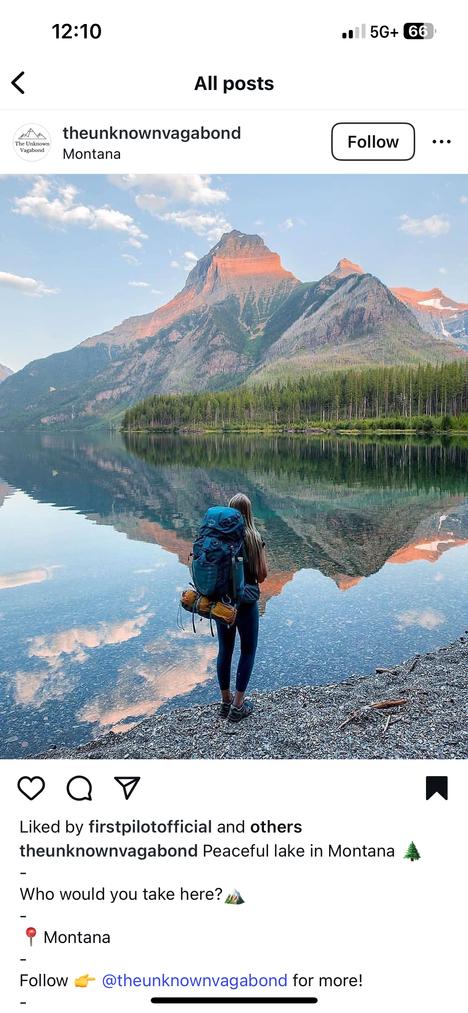
“I love to go hiking. I’m from Montana, so there’s a lot of hiking there in the mountains and other places.”
-Carli Ziegler (sophomore)

“I like the organic and natural foods
Earth provides.”
Toreros to the E
Students lead busy lives, still find time to connect beaches to parks, there that help Toreros feel gr in Mother Earth. These reminder to slow down a beauty of na
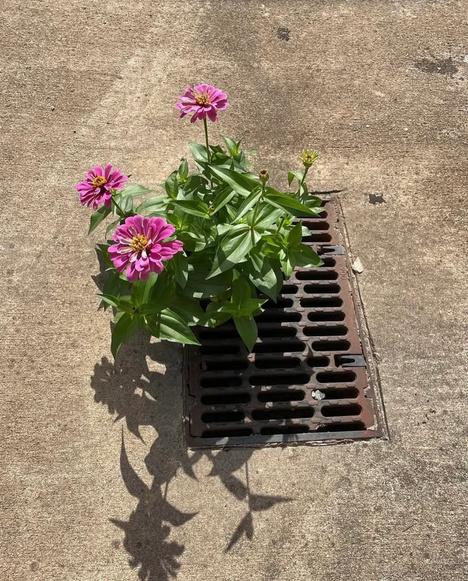

that the
-Sean Quevedo (first-year)
“I love spending time doing activities like backpacking camping. I also just love walking around barefoot really do believe in grounding feeling so connected to
-Elle Lenihan (first-year)
“My favorite thing about resilience. No matter what no matter what is going turning and producing get to enjoy.”
-Mackenzie Vaughn
Photo courtesy of @littleitalymercato/Instagram
Photo courtesy of @helen.x.outside/Instagram
Photo courtesy of
Photo courtesy of @theunkownvagabond/Instagram
s’ ties Earth
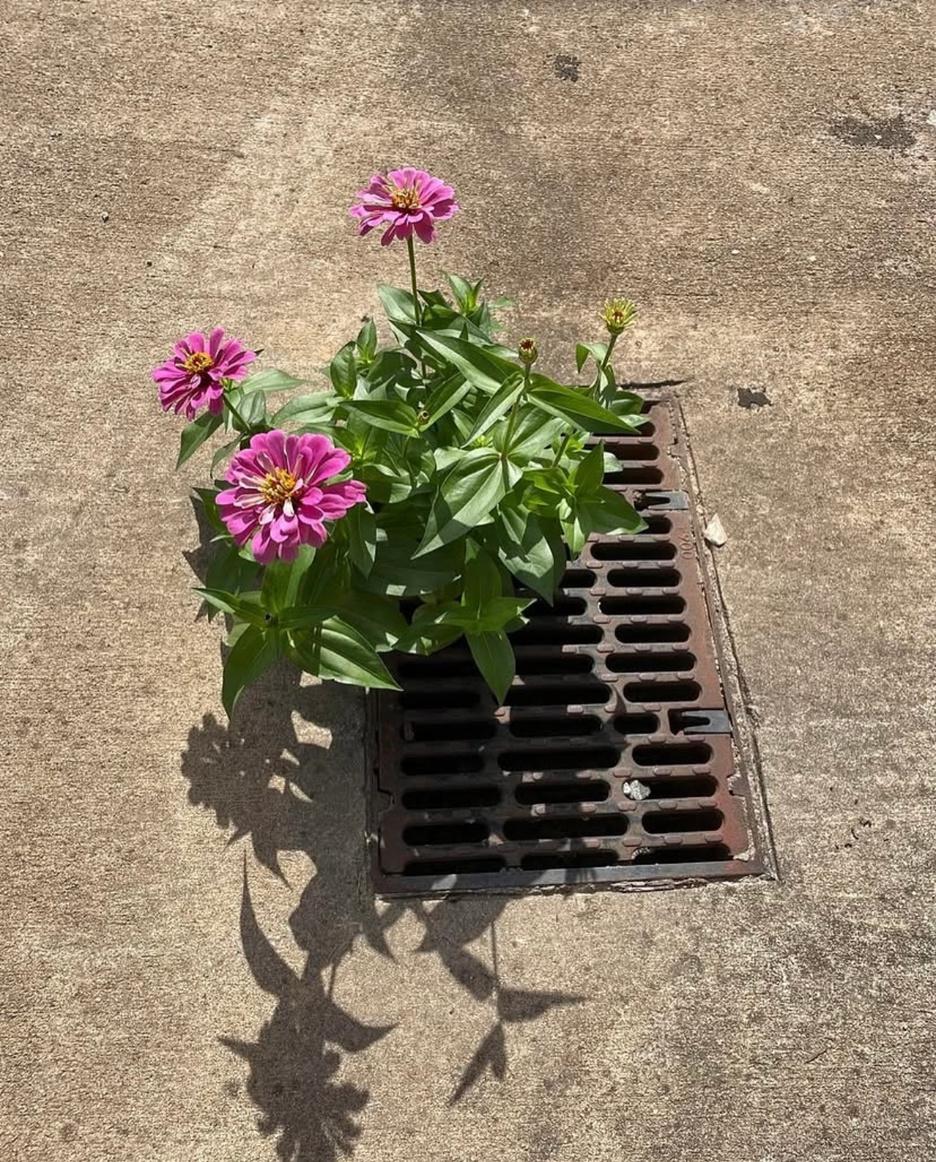
, but some Toreros with nature. From are diverse spots ounded and rooted e ties serve as a and appreciate the ature. time
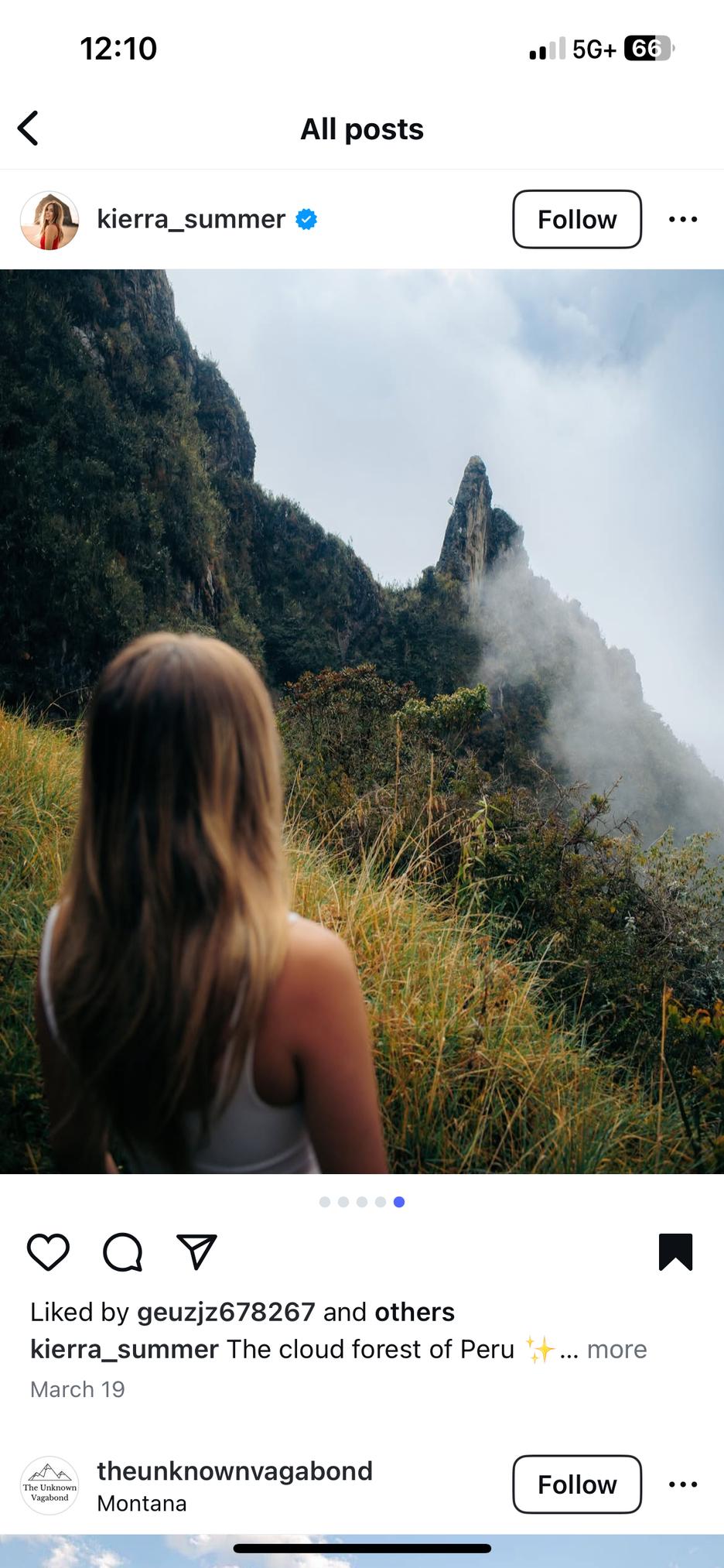
“My favorite thing about the Earth is forests. The Amazon rainforest in particular is really cool.”
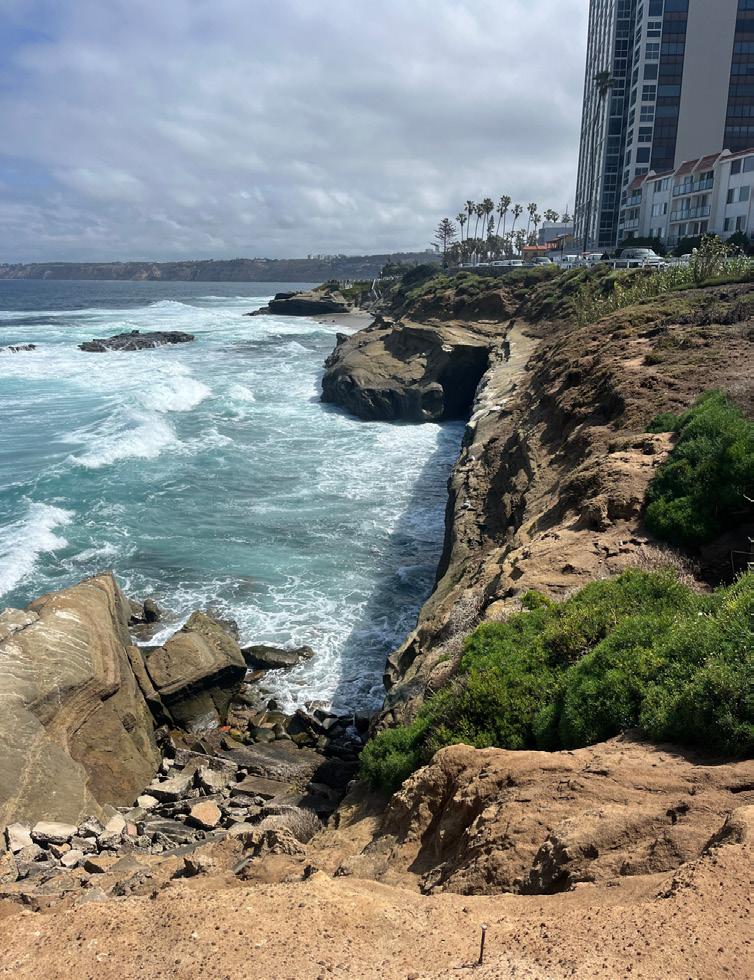
“I really like going to the beach and parks. I like being able to sit outside and enjoy the breeze. It feels calming.”

-Luca Gessner (first-year)
-Orianna Castillo (first-year)
Photo courtesy of @Kierra_Summer/Instagram
Anjali Dalal-Whelan/The USD Vista
It’s
JULIE FROMM ASST. OPINION EDITOR
Before getting ready for bed a few nights ago, I opened my phone to scroll on TikTok. I was met with countless videos of influencers expressing their ideas and tricks to “glow-up” in one month, one week or even overnight. The videos were made entirely by women, applying what they believed to be “miracle lotions” to their faces, layers of castor oil to their stomachs and masks that plug into the wall to illuminate their faces in a red glow of light. Their end goal was to achieve their desired appearance before summer.
I set my phone down and held the bridge of my nose between my fingers in annoyance. Trying to keep up with product releases created to enhance your beauty is like trying to chase a speeding car down the freeway on foot.
As much as they bother me, the tips and tricks from these videos still slip into my psyche no matter how hard I try to ignore them. I looked at the array of products I’ve accumulated specifically for my appearance. The women who post these videos are beautiful, and it’s clear that they are willing to spend whatever amount of money it takes to conjure their “glow-up.”
TikTok allows influencers and users alike to advertise products that enhance their physical appearance, whether it’s a hair mask, a foldable pilates reformer for at-home use, a lip plumper in a sparkly pink tube or a an eyelash
OPINION
Glow up or go home
time to ignore the call for self-improvement
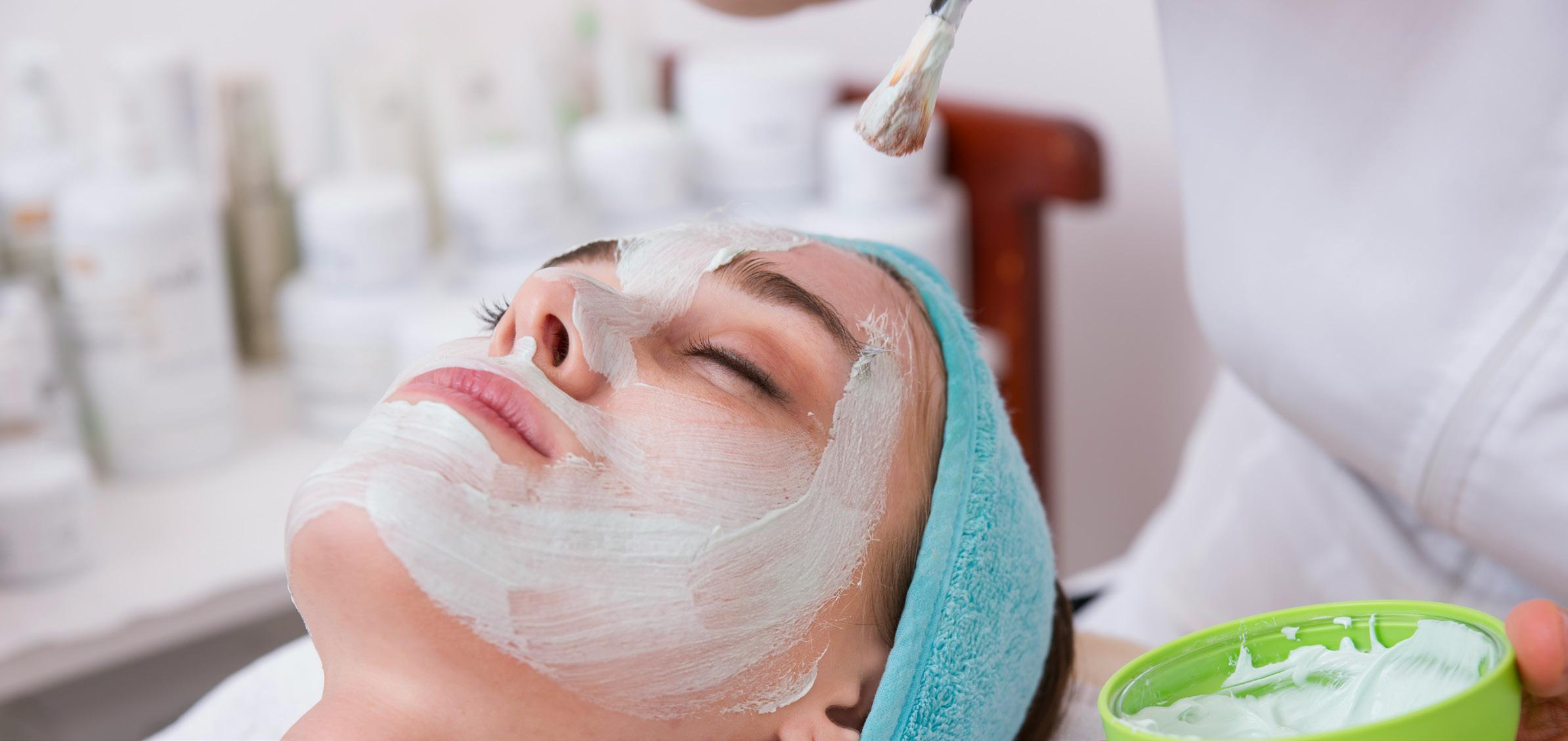
serum to lengthen their natural lashes. Users like myself are bombarded with videos such as these, and I often wonder why I am seeing them. Is it because I selected “female” as my gender on my profile, and therefore am condemned to seeing videos emphasizing appearance at all times? Or, is it because I am watching these videos — no matter how much I try not to — and allowing them to influence what I think of myself and how behind I am in preparing for my summer “glow-up”?
I have spent years of my life thinking about how I look. I worry about what I wear, what makeup I choose to use, how I do my hair and whether or not my acne will clear up on its own or if I need to confer with a dermatologist. It is the most exhausting part of my
life because it is a task that is never completed. When I cave and decide to buy one of the products that an influencer is advertising as life changing, I feel that I’ve solved a problem about my appearance that was never a problem in the first place only to find some other physical feature of mine to focus on the next day. There will never be an end to the ways in which I can “improve” myself until I decide that I don’t need improving.
This is easier said than done, though, when social media implores me to achieve whatever peak appearance society deems acceptable at the time.
The detrimental part of these videos is that they create a narrative that insinuates that you must look a certain way in order to do certain things. For example, you need abs in order to wear a bikini, you
must have clear skin in order to post pictures on Instagram and you need the perfect outfit to go out on the weekends. This standard is not only exclusive, but also irreparably harmful.
Some of the best advice I’ve ever received is that the people around me aren’t thinking about me. No one is thinking about how my skin looks or what I’m wearing. And I am not thinking about others, either. So, it should be simple to put down the phone and stop worrying about what others think of me, or if my body and my face are “summer ready,” right?
The problem is that social media influencers, celebrities and brands don’t want this. If I accepted myself as I am and stopped chasing an unrealistic, unattainable version of myself, then they would lose my business and my
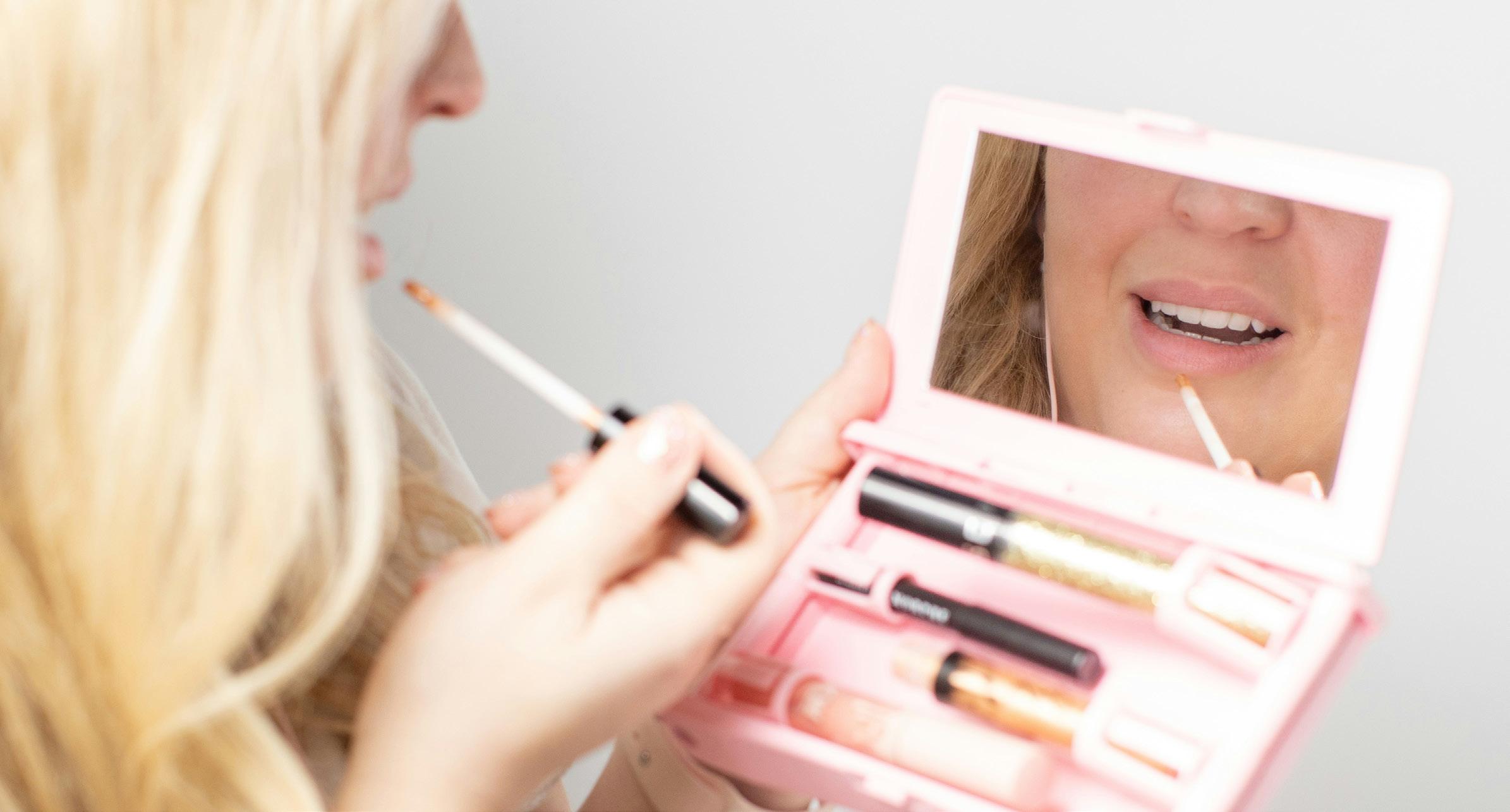
viewership. There would be no pedestals to climb, no rankings to reach and no yardstick to measure myself against. The system would collapse, and we would probably be better for it — if we weren’t fighting against our own human nature, as well. An article by Psychologs explains this.
“Humans have an innate desire for personal fulfillment and growth,” wrote the health magazine. “While fulfilling, this quest also contributes to our constant desire for more, as achieving one goal often leads to the pursuit of the next.”
We are wired toward bettering ourselves, and we all know it. This is how companies and influencers are able to get us to buy the collagen mask that will give us glass skin or the sweatshirt that we absolutely have to have until the next best thing comes around.
I don’t have an answer for how to wrangle the brain into self-acceptance. What I do know is that it begins with ignoring the narrative laid out for us. There is no product that can change the way you feel about yourself — that comes from within. So, I try to spend as little time as I can inspecting people’s pictures on Instagram and try to scroll past videos on appearanceenhancement as fast as possible.
I focus on things that feel truly fulfilling, like connecting with my friends and family and immersing myself in the world around me in a positive way. When my eyes linger a little too long on the pimples on my skin in the mirror, I tell myself that there is nothing about me that needs altering. What matters to my friends, my family and the people I care about is what is happening internally, not externally.
Social media influences its users to purchase products in order for them to “glow up” overnight.
Photo courtesy of @enginakyurt/Unsplash
OPINION
Stop denying AI
USD should start implementing the ethical use of AI in the classroom
ZOE ROGERS OPINION EDITOR
The use of Artificial Intelligence (AI) has become incredibly frequent within the past few years. As undergraduates, we are witnessing AI become increasingly integrated into our everyday lives. Instead of prohibiting the practice of AI, professors at USD should allow us to harness the skills of AI and educate us on how to use it ethically.
AI has become a widespread tool in the workplace, especially in fields such as business, engineering, computer science and healthcare. The University of San Diego’s online blog for business and entrepreneurship provides examples of how AI is used in various occupations.
“AI enables businesses to improve operational efficiency by automating routine tasks, optimizing resource allocation and reducing waste,” USD stated. “These tools are instrumental in cutting costs and improving the bottom line.”
The article continued to provide other benefits that AI can contribute to the business world, such as customer relationship management, employee upscaling, market research, creativity and more. In addition to using AI in business, AI has found its way into the world of medicine. St. George’s University reported on the advantages of using AI in the medical field.
“Over the past decade, health
care organizations have begun implementing the use of virtual health care assistants and chatbots to improve the quality of patient care and enhance engagement,” St. George’s University stated. “These digital health care capabilities are now leveraging AI and machine learning to improve health management tools that help patients gain access to valuable resources and maintain their overall wellness.”
St. George’s University elaborated by writing that AI allows for personalized medicine, diagnostic assistance, drug discovery, medical education, clinical trial optimization and more within the field of medicine.
Because AI is now used in the various professions that many USD undergraduates are pursuing, we should be using it to prepare for our careers instead of prohibiting it in some classrooms.
Each professor at USD has their own preferences with the use of AI when completing class material. The professor of my Communication Research Methods class prohibits the use of AI and ChatGPT within the course.
“Acts considered academic dishonesty (e.g., plagiarism, fabrication of data, use of AI) are defined in the University Integrity Policy found in the undergraduate student handbook,” they stated. “Using AI/ChatGPT is never acceptable on papers or homework (unless I specify differently).”
Professors have their own
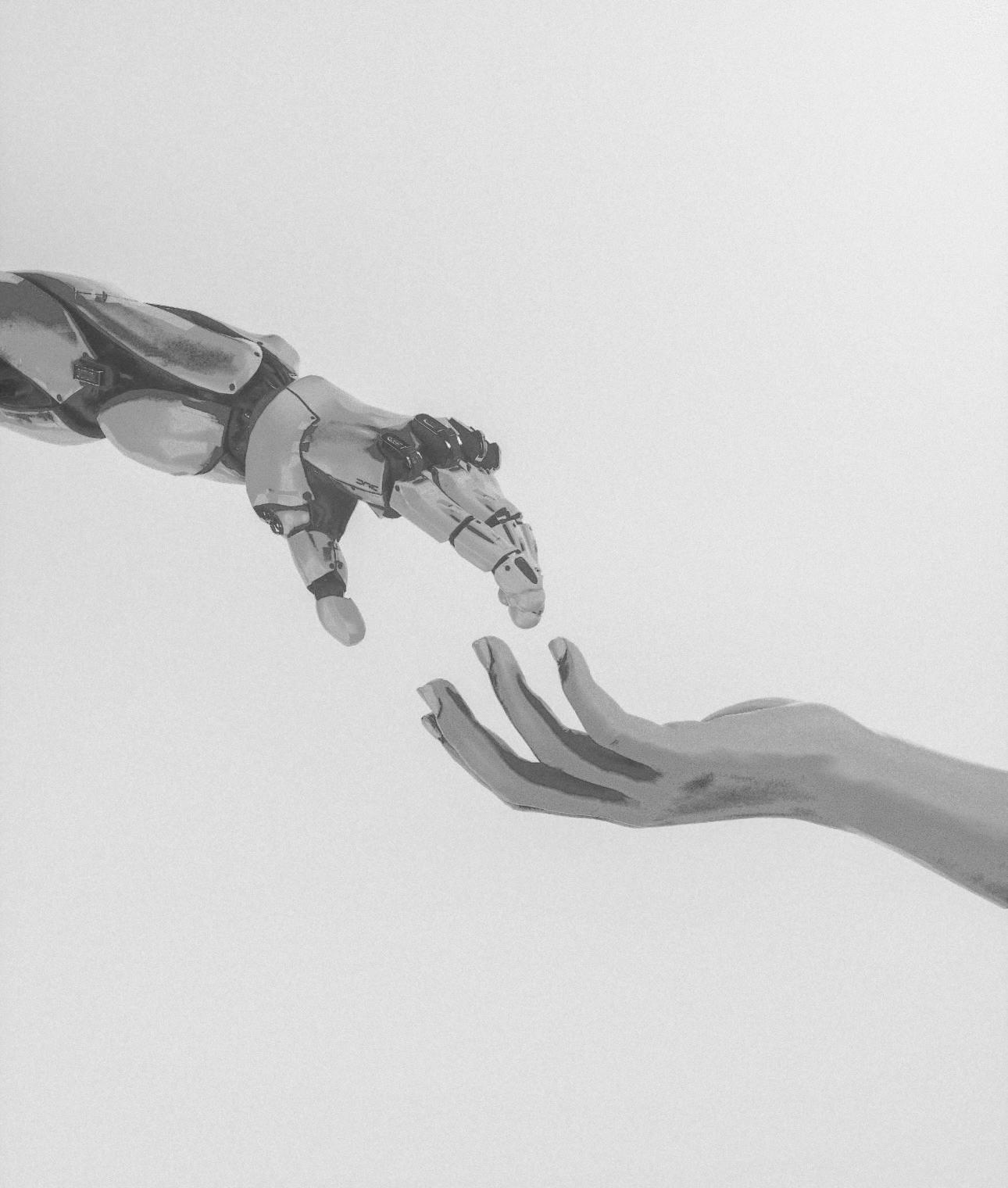

right to deny or approve our use of AI when dealing with classwork. I have a friend in a Global Marketing class whose professor allows the class to use AI only when generating ideas and acquiring sources, but the class is restricted from using AI for writing essays and must explicitly say when AI is used in their coursework.
That being said, while professors have varying opinions on allowing for AI in the classroom, there are ways to use AI ethically when completing class material without crossing the boundaries of academic integrity. Incorporating ethical uses of AI, such as getting feedback on material or checking grammar are ways that AI can be used without hindering our academic growth. Professors should teach us how to credibly evaluate ChatGPT outputs. This includes fact checking, looking for bias and considering what AI outputs exclude. If we incorporate these healthier habits into our lives at school, and avoid relying too heavily on AI, we can be set up for success and use AI to our advantage.
LinkedIn, a professional social networking application, helpful for individuals to find and apply for future careers, wrote that knowledge in AI can set applicants apart from others when it comes to applying for a job.
“Today, the most successful job seekers aren’t just skilled but tech-savvy,” LinkedIn
stated. “They use AI-powered tools to optimize applications, stand out to recruiters, and land interviews faster.”
LinkedIn continued to say that tech can give candidates an edge, providing candidates with AI-powered resume builders, interview coaches, skill-building platforms, networking enhancers and more. Additionally, LinkedIn stated that no knowledge of AI can cause setbacks.
“If you’re not adapting, you’re at a disadvantage,” LinkedIn notes.
LinkedIn implies that the growth of technology and that familiarizing yourself with Artificial Intelligence is the best way to prepare for your career.
While there are benefits to using AI such as efficiency and applicant differentiation, there are concerns with implementing AI, especially in our education.
University of Illinois UrbanaChampaign, known for its strong research in science and engineering, wrote on the ethical concerns of using AI.
“If AI is used to complete assignments or exams or write papers, it is unfair to the students who don’t cheat, and it undermines the education and learning process for those who do cheat,” University of Illinois Urbana-Champaign specified. “If students learn to cheat and take shortcuts in classrooms, what kind of citizens will they make when they are finished with their education? Measures need to be in place to ensure that AI is not being used unethically.” Using AI to write academic course work or even using it to help fill out your homework, can be seen as plagiarism and cheating. Practicing the use of Artificial Intelligence in a dishonest way at school will not set you up for success in the future. If students are using AI to write their papers and do their homework, then they are not learning from those assignments. Instead of learning to think for themselves, they’re letting AI think for them. These are serious concerns, but critical, ethical usage can allow us to stay on top of the technological advancements of sour society. AI is the future. We see it now in our daily lives, education and workforce. It would be foolish to reject Artificial Intelligence instead of learning how to work with it. We are an actively evolving society. Interacting with AI is unavoidable, and we would benefit more from accepting it. It’s time to start practicing how to use AI ethically in academia; in the classroom, it’s better to teach students how to use AI because it will inevitably be in our workforce when we graduate. AI is our future, and we should start utilizing the tools in front of us and move with new advancements instead of pushing against them.
The views expressed in the editorial and op-ed sections are not necessarily those of The USD Vista staff, the University of San Diego, or its student body.
AI can be found in various applications, and it is utilized in numerous ways.
Photo
ARTS & CULTURE
New ‘Hunger Games’ book hits shelves
Suzanne Collins sparks controversy with ‘Sunrise on the Reaping’
RILEY RAINS SPORTS EDITOR
A new Hunger Games tribute has entered the arena — this time, through the eyes of a different generation. Suzanne Collins recently released her second prequel to “The Hunger Games” franchise, “Sunrise on the Reaping.” The novel follows Haymitch Abernathy’s games, giving us a window into the past life of Katniss Everdeen’s mentor. Readers gain insight into Haymitch’s life in District 12, his romantic and personal relationships and his attempt to stand up to the Capitol.
In the original books, which follow the 74th and 75th games, Haymitch is a decrepit drunk who starts off useless to the main characters, Katniss and Peeta. However, once the aging victor sees Katniss’ defiance, he is encouraged to aid in the revolution. Thanks to Haymitch, Katniss and Peeta’s resistance, the “rebels” eventually overturn the oppressive Capitol that hosts the Hunger Games.
Some USD students enjoyed getting a different perspective on Haymitch in the new book. USD firstyear Adriana Quezada gave her input after completing the novel.
“I practically flew through the book because it was that good,” Quezada explained. “In my opinion, ‘Sunrise on the Reaping’ is probably the most devastating book in the whole series, but it is also poignant, thought-provoking and incredibly relevant. It left me with a large pit in my stomach when I finished reading and has made me see the original trilogy in a whole new light.”
Allusions to how the games began are sprinkled in the original series. The war, ending 74 years before Katniss’ game, was caused by rebellion in the 13 districts. The “Dark Days,” as characters call it, resulted in the destruction of District 13 and the implementation of the Hunger Games as a symbol of the Capitol’s power. Every year, a reaping event is held and two children from each district are called to fight to the death on live television. Only one victor remains. The games were named after the starvation that festered its way through all areas of Panem during the Dark Days.
The new prequel centers around the 50th Hunger Games, known as the second quarter quell. Haymitch’s game is unique because
there are double the amount of tributes: 48 instead of the usual 24. Haymitch, in the book, calls it “two Hunger Games in one.”
Collins’ books always are double edged swords — she is known for strong plots with intense messages, and she never writes without a purpose. In an interview with David Levithan, Collins’ editor, she described what type of themes the novel surrounds.
“Within the story, I’m attempting to have implicit submission play out on three levels: individual, Hunger Games and national,” Collins explained. “First, there’s Haymitch’s personal dramatic arc. Will he defy his own implicit submission to the Capitol and stop that reaping? The second level plays out during the actual Hunger Games. By refusing to demonstrate implicit submission, will Ampert’s alliance against the Careers upend the usual results in the arena, allowing a Newcomer to win? Finally, there’s the nation of Panem, in which not just the districts, but the entire country has ceded power to a dictator and his cronies.”
Without spoilers, Ampert is one of Haymitch’s allies in the games — someone whose father readers know and love.
Collins dances the line of a variety of different narratives, reflecting our real world in every sentence. USD junior Hailey Wood explained the connections she observed.
“I saw a lot of connections to modern day society with the all-powerful government taking control of people who don’t have a voice,” Wood said.
“I can see the government using money and power to corrupt innocent lives today through deportation, taxes, [lack of] prison reform, etc.
It honestly scares me how much our reality is becoming a dystopian novel especially with the most recent election.”
Collins uses propaganda as a major foothold for the story’s plot. The Capitol uses the catchphrase “NO GAMES, NO PEACE” to keep citizens in line with its oppressive rule. Collins also addresses problems like the ignorance of the rich, child labor and class division. Quezada commended Collins for her ability to spark difficult conversations.
“I admire Suzanne Collins so much because of her tendency to write when she wants to make a statement,” Quezada said. “It was honestly scary to read this book and see some striking connections to our society, country and
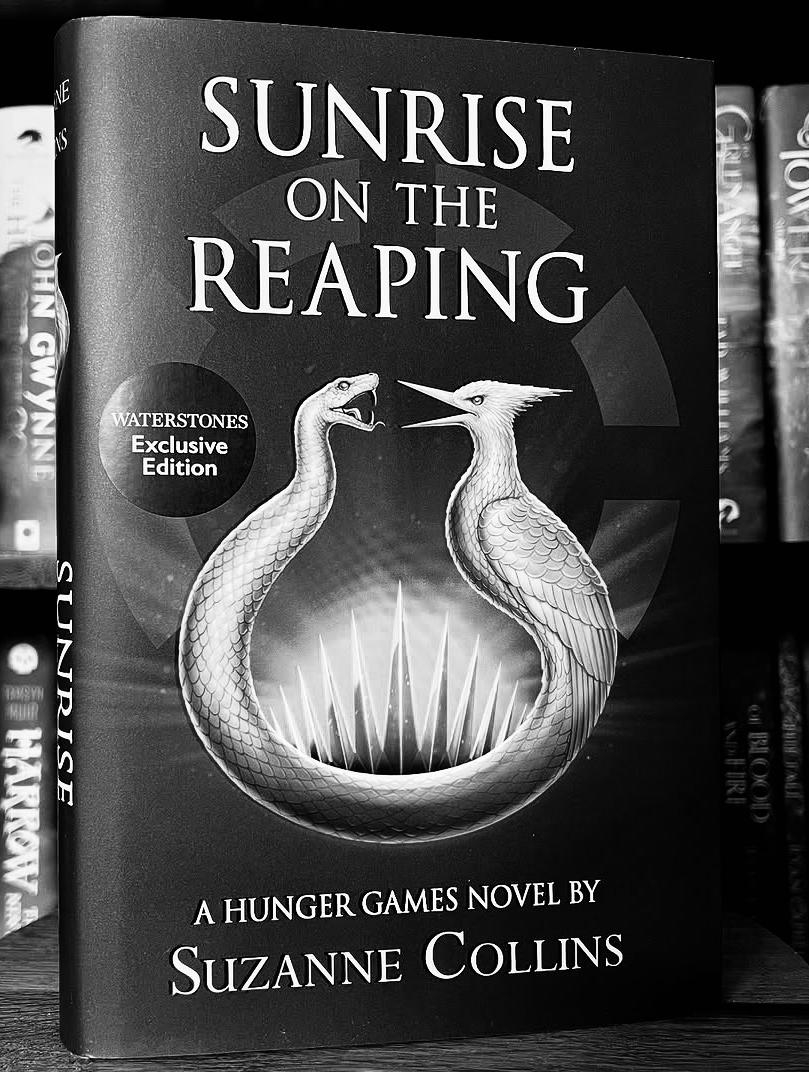
world as of late. Propaganda and nationalism were huge themes in this book.”
Propaganda is indisputably a large part of “Sunrise on the Reaping,” but some readers felt the message was superficial. Kaylee Nguyen, a John Hopkins NewsLetter editor, highlighted the flaws that she saw.
“In terms of the portrayal of propaganda, I found it to be surface-level at best,” Nguyen wrote. “Rather than offering the sharp, unflinching commentary that made the original series a literary phenomenon, ‘Sunrise on the Reaping’ leans on nostalgia, threading its narrative through the familiar rather than the daring. Its political commentary (while present) lacks the layers of its predecessors.”
Some agree with Nguyen, and felt that the series relied heavily on the original trilogy and lacked depth. Staff writer Hannah Galway for The Harvard Crimson shared her critiques in a review.
“While the ending is emotional — since audiences have come to love Haymitch over the course of this book and the original
trilogy — there is little information shared that will actually enhance readings of the other books,” Galway explained. “In short, ‘Sunrise on the Reaping’ just feels unnecessary in the grand scheme of Collins’ universe. It’s a treat for fans, but on its own, [it] doesn’t have much new to say, and its redundancy threatens to weaken the overall impact of the series.”
USD sophomore Ella Fitzpatrick, an avid reader, disagrees. Fitzpatrick described her praise and excitement for Collins’ writing.
“I mean, in my opinion I don’t think anybody does it like Suzanne Collins,” Fitzpatrick said. “She is the blueprint for a lot of fantasy novels that we see coming out nowadays … I feel like the characters that she tends to write tend to be morally gray or complex. This book adds a lot of depth to the narrative, and it fills in missing pieces. She gave us a better understanding of the main storyline.”
While many of USD’s “Hunger Games” readers were excited for the book, even more are ecstatic for the movie. Lionsgate, the film
company producing ‘Sunrise on the Reaping,’ is releasing the casting list gradually: two characters at a time, and as always, ladies first. Students are buzzing with anticipation in light of the tease that reflects the structure of the reaping.
“The casting for this movie is already perfect,” Wood stated. “Joseph Zada and Whitney Peak look just like how I imagined Haymitch and Lenore Dove while reading the book. I also saw McKenna Grace’s casting coming from a mile away. She will be so perfect for Maysilee Donner. The casting team is doing an amazing job so far, and I cannot wait for more actors to be announced. “The Hunger Games” movies are some of the best book-tomovie adaptations ever, in my opinion, and I have no doubt that this new movie will be just as good, if not better, than the other movies.”
With the movie expected to be released in November of 2026, students are excited to see what else Collins has in store. Regardless of varied opinions, Haymitch’s story has given readers a snapshot into his dark past. Collins wasn’t done with Panem, and neither are fans at USD.
Many bookstores quickly sold out of Suzanne Collins’ new novel, ‘Sunrise on the Reaping.’
Photo courtesy of @novelswithnick/Instagram
ELLIE SKJERSAA ARTS & CULTURE EDITOR
In the valley of Indio, California, a rich agricultural desert is annually transformed into a colorful and artistic haven for music-lovers. People around the world know it as Coachella. Large crowds, popular musicians and artists alike gather throughout two consecutive threeday weekends in April. With its close proximity to San Diego, some Toreros find themselves joining in on the festivities — if they can afford the steep price of admission.
“Being here in San Diego, it’s such a short drive,” USD senior Alexa Gutierrez said. “You have four years to go so if you go at least once, you can get it off your bucket list.”
USD senior Lulu Kienast shared a similar sentiment.
“My parents would always go to Coachella when I was growing up, so it was always something that I wanted to do,” Kienast said. “I got the opportunity to go freshman year for free, and I went.”
The festival began in 1999 after the decline of Woodstock, a popular music festival, and has amassed immense success. However, Coachella did not begin as the glamorous getaway that it is known as today. It started from humble beginnings with the intention of rebelling against the corporate greed of Ticketmaster.
In the early 90s, the American rock band Pearl Jam infamously turned away from Ticketmaster and decided to sell tickets separately. In 1994, the Justice
The valley of festivals How Coachella has evolved from 1999 to now
Department helped the band file an antitrust complaint against the company on the grounds that they had been monopolizing concert venues and ripping off consumers. The main area of price gouging occurred in service fees.
After Pearl Jam abandoned their tour with Ticketmaster, they began the search for venues separate from the company. In 1993, the band found themselves in the small town of Indio, California. With tickets sold for the low price of 18 dollars with a maximum service fee of one dollar and 80 cents, Pearl Jam performed for an estimated audience of 25,000 people. The success of the performance at the Empire Polo Club, where Coachella takes place today, fueled the creation of Coachella, confirming that this venue could indeed draw in a crowd.
With the help of Goldenvoice, a concert promoter, the festival launched and took off quickly. This year, Coachella drew in a crowd of around 125,000 people per day, including many top-hit headliners and admired celebrities.
However, ticket prices are continuing to increase.
Coachella tickets were once sold for 50 dollars. Now, tickets are sold for around 600 dollars or more — not including necessities such as food, lodging and transportation.
USD senior Nancy AguilarLopez attended Coachella in 2024 and shared what held her back from returning to the valley this spring.
“The reason I chose not to go this year was because of artists and price,” Aguilar-

Lopez said. “I was not willing to pay that price because there were only two or three artists that I really liked.”
This year, a survey found that 60% of people who attended the festival used a payment plan. Some students believe that the price increase may have to do with its evolution from an indie and alternative music festival to a general display of pop culture.
“I heard a lot about how Coachella used to be the ‘goto’ indie festival, and now you don’t see a lot of independent artists anymore,”
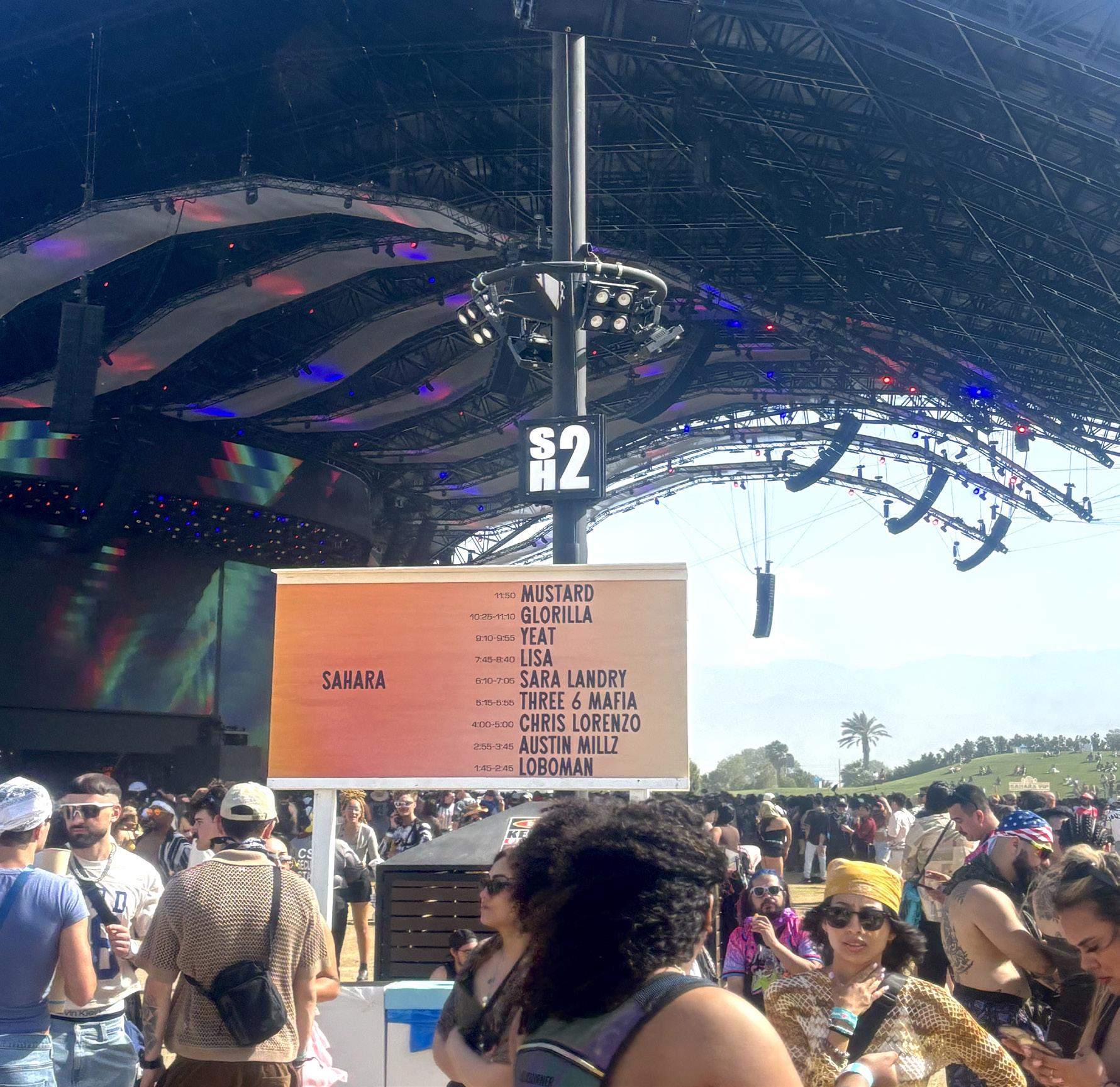
Gutierrez said. “If they are performing, they’re one of the first sets when the venue is empty. I think it has to do a lot with consumerism and growing on a global scale. Now Coachella is trying to bring in all audiences. Instead of caring more about giving a voice to independent artists, they’re just making money out of mainstream stuff.”
Additionally, throughout the years that Coachella has taken place, there has been an expansion in the technology realm. With the creation and large impact of social media, the culture of the festival itself has transformed, too.
“I feel like sometimes phones ruin the vibe for concerts,” Aguilar-Lopez said.
“I [won’t] say that I don’t do it, but everyone having their phones up, it’s so insane. Festival culture has changed over the years, and it’s actually really sad. Sometimes I am jumping and enjoying it, but then I’m like, ‘Wait, am I being too much? No one else is at the same energy as me.’”
In a time where everything is posted online for all to see, criticism surrounding the outfits worn to festivals such as Coachella have taken the forefront, specifically stemming from cultural appropriation of Indigenous culture. Cultural appropriation involves inappropriately or ignorantly borrowing from the cultures, practices or beliefs of one group that has historically been excluded by a more dominant group of society. Coachella historically has taken on a bohemian aesthetic, inspired by the legacy of Woodstock and the hippie movement throughout the ‘60s and ‘70s. However,
with the presence of social media, peoples voices are now amplified and bringing awareness to the dangers of inappropriate representation.
“I think if we now saw outfits that people wore to Coachella in 2010, it would be very controversial,” Gutierrez said. “If you’re publishing it on Tiktok, you’re subject to getting canceled because of one little accessory.”
Other students feel that educating oneself is something that can be done on an individual, as well as an organizational level.
“I think it’s important to educate yourself about what you’re wearing, and I think sometimes, people don’t do that,” Kienast said. “That’s something Coachella can work on. I think it’s definitely important for people to understand what they’re wearing, especially at a big place like Coachella where there are people there from all walks of life.”
While Coachella has evolved from humble, anticorporate beginnings into a global cultural phenomenon, its transformation has not been without criticism. What was once a generally affordable celebration of indie music has become an expensive and highly-curated experience. For many USD students, the close-to-home festival remains an exciting life goal — yet rising costs and increasing social awareness around issues like cultural appropriation highlight Coachella’s changing tides. As the festival continues to grow, so does the responsibility of both organizers and attendees to honor the diverse cultures and communities that make it what it is today.
This year, masses of folks from around the globe came together to enjoy the music festival, Coachella.
Photo courtesy of @coachella/Instagram
The Sahara stage at Coachella featured many popular artists throughout the two weekends.
Photo courtesy of Lulu Kienast
The Great Eight bests the Great One
Alexander Ovechkin breaks the NHL’s goal-scoring record
LUKAS BLANKENSTEIN CONTRIBUTOR
Alexander Ovechkin made history on April 6, 2025 by scoring his 895th career National Hockey League (NHL) goal. The goal was scored with 12:34 left in the second period in a game against the New York Islanders.
The NHL goal record was previously held by hockey legend Wayne Gretzky, a player so prolific that he is often referred to as “The Great One” by fans. When he retired in 1999, he boasted the most major NHL records, including the record for points (2857),
A
RILEY RAINS SPORTS EDITOR
The Women’s National Basketball Association (WNBA) draft kicked off on April 15 with Paige Bueckers securing the first pick slot. Bueckers is a senior guard at the University of Connecticut and will graduate in May. She averaged 19.8 points per game and shocked the world with her impressive skills throughout college. In 2019, Bueckers spoke to Sport Slam about her career goals.
“Senior year in college, probably winning a national championship and then preparing for the WNBA draft,” Bueckers stated. “[I’m] hoping to go first pick.”
Bueckers accomplished all
assists (1,963) and goals (894). Along with these stats, Ovechkin also has more assists than any other individual player has in points, which is assists and goals combined.
Gretzky was in attendance for the historic achievement in order to congratulate Ovechkin for breaking his record.
Ovechkin was drafted in 2004 as the first overall pick by the Washington Capitals, where he has played ever since. He became the second ever Russian player to be drafted as the first overall pick, after Ilya Kovalchuk in 2001.
Ovechkin’s hallmark has been his consistency. The “Great
Eight” — nicknamed because he wears number eight — has scored over 30 goals in 19 of his 20 NHL seasons with the only exception being the 202021 season which was shortened by COVID. By coincidence, Ovechkin also scored his 895th goal in his 1487th game, the same number of games Gretzky played in his career.
At 39 years old, many were wondering if this would be Ovechkin’s last chance to break the record. Ovechkin has since quelled rumors about him potentially retiring in an interview on the Pat McAfee show, claiming he has at least one more season in him.
“Well, I have one more year, and we’ll see what’s gonna happen,” Ovechkin said. “I love the team, I love being around the boys and as long as I can, I will try to stick around and put my great body in the NHL.”
As of publication, Ovechkin has scored another two goals in the final few games of the regular season, bringing his total up to 897. Even if this was his last season, he would still be in the history books as the greatest goal scorer in NHL history. He still has time to build his legacy even higher, with the upcoming playoffs. So far, he has already scored a game winning overtime goal, working

toward a second championship to add to his resume. He also has at least one more season to create an even larger gap for someone to surpass him as the NHL’s top goal scorer of all time.
recap of the 2025 WNBA draft Paige Bueckers secured the first pick slot
of these goals, earning a recent national championship trophy for the Huskies. Bueckers will be competing with the Dallas Wings after graduation.
“To be where my feet are tonight, and to share this moment with the people I love, it just means everything,” Bueckers said.
USD sophomore, Sophia Raia, shared her thoughts on Bueckers as a player.
“I think her mindset and leadership makes her stand out even more,” Raia said. “She is bigger than dribbling a basketball.”
The second pick of the WNBA draft was Dominique Malonga, who will be playing for the Seattle Storm, and the third pick was Sonia Citron, who will be competing
with the Washington Mystics.
One large shock from the draft was the omission of Sedona Prince from any picks. Prince played basketball at three different schools: University of Texas, University of Oregon and Texas Christian University. She had a large social media presence and was “canceled” for allegations of domestic violence and sexual assault. ESPN reported that while Prince had been a highly touted prospect, her draft was complicated by these factors. Prince remains undrafted and denies all allegations. With women’s college basketball coming to a close, all eyes will be on the top picks and how they fare in the big leagues.
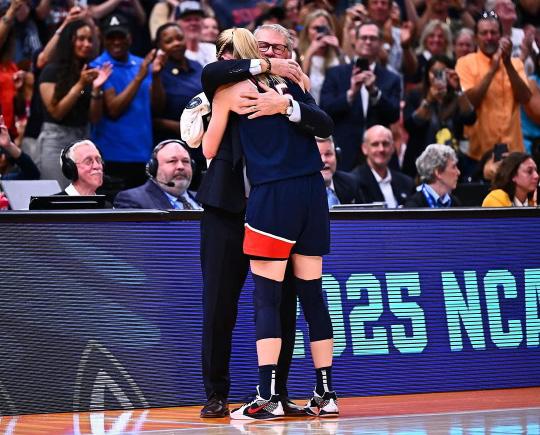
Rory McIlroy completes his masterpiece The Masters stays true to old traditions
Every April, The Masters returns to Augusta National Golf Club, looking almost exactly the way it always has. The tradition of The Masters has drawn crowds in since its start in 1934, making it one of golf’s most iconic tournaments. Known for its famous green jacket, beautiful scenery and strict traditions, The Masters is the only major golf tournament played at the same course every year. Unlike other big tournaments that rotate locations, The Masters is always held at Augusta National, so players and fans see the same iconic holes and
scenery each spring. The winner of the tournament gets a green jacket — a custom that started in 1949 and has become one of golf’s most recognizable honors.
Even the food remains simple. Pimento cheese and egg salad sandwiches, peach ice cream and sweet tea are all sold at prices that remain true to tradition.
Cell phones aren’t allowed, a rule that helps keep The Masters’ classic atmosphere intact.
There’s a dress code for attendees: collared shirts are required and jeans or high heels are not allowed.
Even the TV coverage stands out — there is not any constant noise or flashy graphics. It’s just the players, the course
and a tournament that lets the pressure build without forcing it.
This year, Rory McIlroy, a five-time major champion from Northern Ireland, beat England’s Justin Rose, a former winner of The U.S. Open and an Olympic gold medalist. The victory earned McIlory his first green jacket.
With this win, McIlory became the sixth male golfer to complete what’s called a career Grand Slam. This title means that he won each of golf’s four major tournaments, The Masters, The PGA Championship, The U.S. Open and The Open Championship, at least once in his career.
The field was competitive. Scottie Scheffler, last year’s
champion and current world No.1, was in the mix. Jon Rahm, who won The Masters in 2023, also made a run. Collin Morikawa, who already owns two major titles, and Justin Thomas, who won The PGA Championship in 2017 and 2022, were both hoping to add another chapter to their careers at Augusta. The tournament is known for drawing the best in golf. At USD, sports like football, basketball and soccer usually get more attention. Golf moves slower, and the same is true at The Masters. Ryan Abuan, a sophomore on the USD golf team, said his favorite Masters tradition is the green jacket ceremony.
“I feel that the green jacket ceremony is a staple in professional golf,” Abaun said. “The green jacket ceremony has been ran the same way for decades, and gives the winner the true experience of what it feels like to win The Masters.”
At Augusta National, tradition isn’t just a word. It’s how things are done, year after year.
“We’ll always do what’s necessary to keep the course the way it should be,” Fred Ridley, chairman of Augusta National Golf Club, said.
In a sports world that is constantly chasing something new, The Masters is one of the few events that still trusts the game to deliver the story.
Ovechkin racing across the ice.
Photo courtesy of
Bueckers hugging Geno Auriemma, head coach, after winning the national championship.
Photo courtesy of @paigebueckers/Instagram
CHERISHANN DIAMZON CONTRIBUTOR
